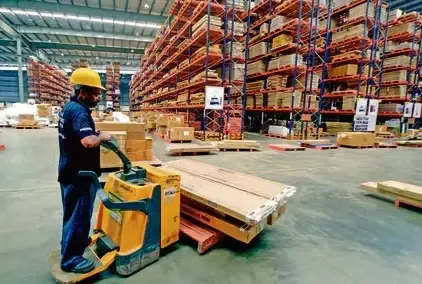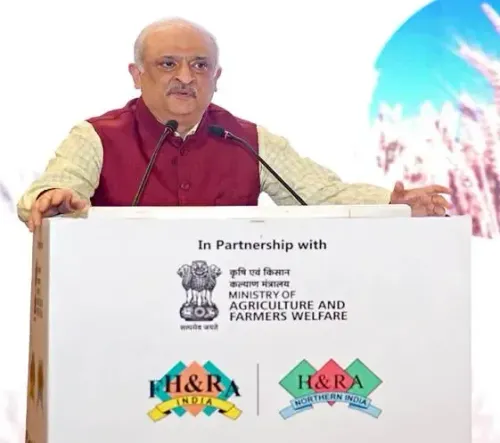Rapid Expansion in India's Logistics and Warehousing Sector Driven by Emerging Cities

Synopsis
Key Takeaways
- Emerging cities are becoming key logistics hubs.
- Total warehousing stock reached 533.1 million square feet.
- 18.7 percent of warehousing comes from tier 2 and 3 cities.
- Logistics costs are targeted to reduce to 8 percent.
- The sector contributes 13-14 percent to India's GDP.
New Delhi, March 3 (NationPress) India’s logistics and warehousing sector is experiencing a remarkable transformation, fueled by government policies, infrastructure improvements, technological innovations, and shifting consumption trends among citizens.
This sector's impressive growth is increasingly supported by emerging tier 2 and tier 3 cities, which are swiftly becoming key contributors to this evolution.
A recent report by JLL indicates that India's total warehousing inventory reached 533.1 million square feet in 2024, with nearly 100 million square feet, or 18.7 percent, originating from tier 2 and 3 cities.
This represents a significant transformation in the nation’s logistics landscape, as these cities develop into essential hubs for distribution networks.
The establishment of a hub-and-spoke model, further enhanced by the implementation of Goods and Services Tax (GST), plays a crucial role in increasing warehousing capacity in these areas, particularly to meet the rising e-commerce demands.
The consumption surge, especially driven by online shopping trends, has resulted in heightened demand for fulfillment centers in proximity to consumers, as noted in the report.
The analysis further highlighted that this transformation is not only enhancing last-mile delivery but also lowering logistics costs by positioning supply chains closer to end users.
According to an ANAROCK Capital report, the year 2025 may witness growth surpassing the 25 percent annual increase in industrial and logistics space absorption observed last year.
The report also emphasized that the logistics sector is rapidly advancing, spurred by rising investments, digital transformation, and robust policy measures.
The warehousing and logistics industry contributes 13-14 percent to India’s GDP and is expanding to align with the nation’s swift economic growth.
With the rapid growth of e-commerce and the government’s focus on infrastructure development, the logistics and warehousing sector is recognized as a key driver of economic progress, as stated by Union Minister of Consumer Affairs, Food and Public Distribution, Pralhad Joshi.
Through the launch of the National Logistics Policy (NLP) and the PM Gati Shakti Programme, “we aim to reduce logistics costs from the current 13-14 percent to global standards of approximately 8 percent,” the minister remarked during an event on Sunday.









